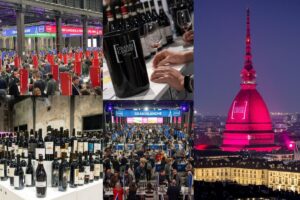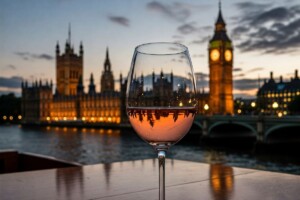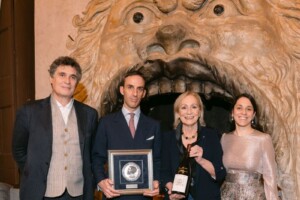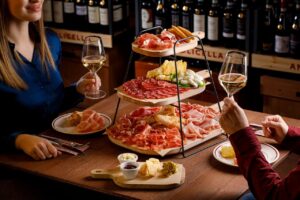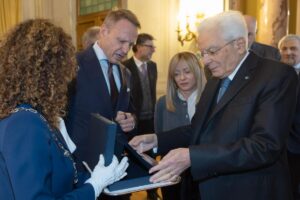“If producers recognize the need to modify the disciplinary, we will help them out in order to avoid bureaucratic red tape”. These were the comments made recently by the Minister of Agriculture, Luca Zaia, in response to the “Brunello scandal”. Zaia, with his welcoming of any changes that are decided on for the Brunello disciplinary, appears to be sending a strong and precise message that he is open to any proposals in order to resolve the sticky impasse in which the Tuscan denomination now finds itself. He emphasized that the disciplinary, “is a question that regards, above all, producers” and “it is not an ideological question, but regards grape varietals, producers, and consumers”.
The Minister of Agriculture is worried that, “the Brunello di Montalcino issue could become a big domino, and we do not want this. We want to freeze the situation”. Zaia has, however, also pointed out that, “the fact that the story began with Italian controls demonstrates the validity of such controls. And it is not about a food safety issue. However, the damage to image must be remediated: also because wine is one of the leading Italian agri-food exports in the world”.
As for the “Guarantee Board”, which was recently instituted with a Ministerial decree, Luca Zaia explained that he has nominated the “three sages” to safeguard Italy’s image at an international level. “It is not” – continued the Minister – “a problem of food safety, but of credibility on the market… And it is precisely on the international markets that we remain the leader, but they pardon us more than the others. Not that the greater public even really knows profoundly about the issue. I would like to know how many know that Brunello is made only with Sangiovese grapes? I am used to making decisions without losing time. I had to react like this to save something excellent but gravely ill, and avoid sending it to the operating room”.
Eleonora Ciolfi
The Curiosity – When Brunello di Montalcino was made with other grape varietals (with a 10% limit though)…
Probably not many people know that the first Brunello disciplinary (created in 1966 with the institution of DOC and that remained in vigor until 1980, the year its DOCG was recognized) permitted the limited use of grape varietals other than Sangiovese. It is in fact stated in the Presidential Decree of 28 March 1966, “Recognition of the denomination of controlled origin of Brunello di Montalcino wine and approval of the relative disciplinary of production”.
Article 2 specifies that, “Brunello di Montalcino wine must be obtained from grapes of the Brunello di Montalcino varietals (Sangiovese Grosso), produced in the municipal territory of Montalcino”. But in Article 4 of the decree, it is also written that, “a correction with musts and wines from other parts of the areas is admitted in a maximum amount of 10%”.
The Comments - The Biondi Santi family who invented Brunello:
“It must be 100% Sangiovese”. The ex-mayor of Montalcino, Ilio Raffaelli: “I have no idea when the idea of 100% Sangiovese came about…but Brunello is and must remain only Sangiovese…”
My company has always produced Brunello with 100% Sangiovese, and we have never felt the need to add other varietals. I don’t even remember the details of the old disciplinary from 1966. As for the possibility of modifying the production disciplinary proposed by the Minister, I am very alarmed and worried: I believe that all producers of Montalcino should unite and fight against the verification of this eventuality”.
“In 1964” – remembers Ilio Raffaelli, the historic mayor of Montalcino from 1960 to 1980, the crucial years for the ‘rebirth’ of Montalcino – “Brunello was produced but there was no disciplinary. In an interview with La Nazione on 27 November 1963, I confirmed that the rebirth of Montalcino had to primarily pass through viticulture. A few years later, it was Tancredi Biondi Santi and Professor Giovanni Garoglio, the world famous enologist, who spoke to me about the need for regulations on the production of Brunello di Montalcino.
Not being an expert in the area, I emphasized, rather, the absolute importance of identifying in the name ‘Brunello di Montalcino’ and in the territory of the municipality that is the only production zone (which had already been delineated in 1932), the elements of absolute distinction for our wine”.
“This is how we arrived at the formulation of the first disciplinary, with the Presidential Decree of the Republic of 28 March 1966, created by Biondi Santi and Garoglio together with the obtainment of the DOC seal, making it the seventh wine in Italy. It was Article 4 of the decree that read, as well as Sangiovese grapes, the correction with musts and wines from other areas was admitted in a measure of 10%. I have no idea when the idea of 100% Sangiovese came about, just as no one had ever spoken to me about the using other grapes. I must note, however, that in a public assembly in 1972, Tancredi Biondi Santi sustained that his Brunello did not need any additions of musts or wines because he produced Brunello from old vineyards, never younger than 10 years. Garoglio was also the author of the second disciplinary of 1980, with the Decree of the President of the Republic of 1 July 1980, when Brunello was the first Italian wine to obtain the DOCG seal: from then on the use of other ‘musts and wines’ was no longer allowed. The Decree of 1980 established that “the wine Brunello di Montalcino must be obtained exclusively from grapes of vineyards composed of the Brunello di Montalcino varietals (Sangiovese Grosso)”.
”Brunello is and must remain” – proclaimed Raffaelli – “only Sangiovese because it is here that the land has the best yield, without needing any additions. Without knowing how long they last and improve with ageing, how can the addition of other grapes happen? Being 100% Sangiovese means “excellence”, which no one can copy, unlike what occurs in France for example.
If we modify its composition, Brunello will no longer be the same”.
The Position – The “acting” president of the Brunello Consortium, Patrizio Cencioni: “For the time being no changes to the Brunello disciplinary”
The producers of Brunello have no intention of changing the production disciplinary: “Up to this point we have demonstrated our intentions to leave it as it is now”.
This was the statement made by the “acting” president of the Brunello Consortium, Patrizio Cencioni, after the recent meeting with the delegation of the American Alcohol and Tobacco Tax and Trade Bureau. Cencioni noted that, “Not until there is a request by the majority of producers will there be a change in this sense. There must be a shared majority. And, until now, this request has not been made”.
Emma Lucherini - Gioia Bazzotti
Copyright © 2000/2025
Contatti: info@winenews.it
Seguici anche su Twitter: @WineNewsIt
Seguici anche su Facebook: @winenewsit
Questo articolo è tratto dall'archivio di WineNews - Tutti i diritti riservati - Copyright © 2000/2025











